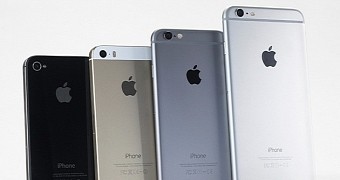Currently, Apple outsources its A9 iPhone 6 chips from Samsung. And while orders are doing fine, it appears the American company chose TSMC as well to join the fun and start working on its current-gen iPhone SoCs besides Samsung.
To make sure the supply remains steady for its latest system-on-chips found inside the latest iPhone smartphones, Apple appealed to TSMC to start working on the current-gen A9 chips. The new FinFET 16nm from TSMC will join the Samsung fabs to produce SoCs on the same ARM-licensed architecture but will be a tad smaller than the Samsung ones.
According to Chipworks, the die sizes from the two foundries differ. The APL0898 (Samsung) die is around 8 square millimeters smaller, 96 square millimeters overall, than the TSMC one APL1022 (TSMC) that stands at about 104.5 millimeters. The reason for this is the fabrication process each company uses as standard. Samsung is using the 14nm manufacturing process while TSMC uses the 16nm one, hence the obvious size difference.
Huge iPhone 6S demand makes Apple dual-source its A9 chips
With the new iPhone 6S launched, Apple expects that it will be the best selling iPhone device ever, with the preferred market being China where Apple sales are going sky-high for a year or so. The company expects to sell around 90 million new headsets by the turn of the year. Each headset needs an SoC, so you can count the number of chips Apple would need to be produced by 2016.
Now it's obvious why Apple decided to double-source its supply of SoCs from both TSMC and Samsung. The two foundries will easily be able to supply the growing demand of chips, this way helping Apple negotiate the lowest prices per batch. However, the different sources of the chips will clearly leave the users guessing from which fab their SoCs come from, inevitably spurring some sort of competition.
The two manufacturing processes will clearly be reflected in how much power they consume and how much heat they will emit. It's very likely that in time some chips coming from one of the two foundries may become preferred over the other.

 14 DAY TRIAL //
14 DAY TRIAL //